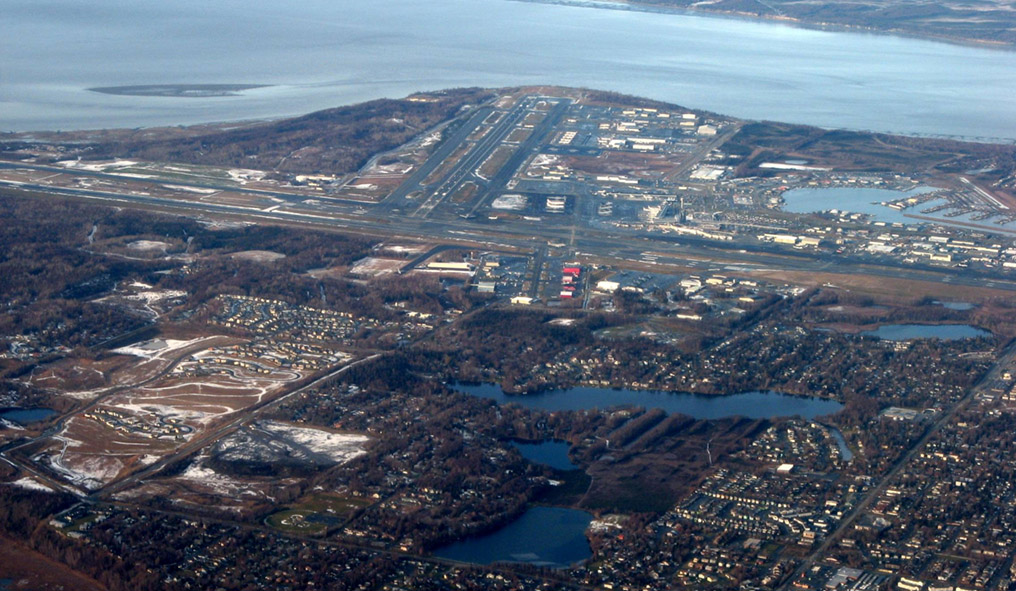
|
- I arrived in Anchorage late the night of July 17, 2022 minus one bag. OK Delta Airlines,
that's 2 for two; first Croatia, now Anchorage. Bag arrived midnight. I stayed at the
Captain Cook Hotel. I was assigned a suite, which was way cool. These are images of my
room and the view from the suite taken the morning of the 18th. Anchorage was very
beautiful even in the overcast weather.
- We boarded a bus which took us from the hotel in Anchorage to the Alaska Railroad train
station in Talkeetna. We made a pit stop at this grocery store in Willow, Alaska along
the way. Hopefully, we bought enough drinks and snacks to justify using their facilities,
because we all used them. There was a toilet on the bus but it was more for emergency use
and didn't have the capacity to handle all of us.
- We boarded train to travel to Denali at this Talkeetna "train station" (more like a wide
spot in the road.. It was a beautiful train ride viewing mountains, rivers, waterfalls,
and more. My R5 camera battery died almost immediately upon boarding. The spares were
in the suitcase in the bus. My cell phone camera came through in the pinch.
- Video of Alaskan Railroad Train
- Photos
|
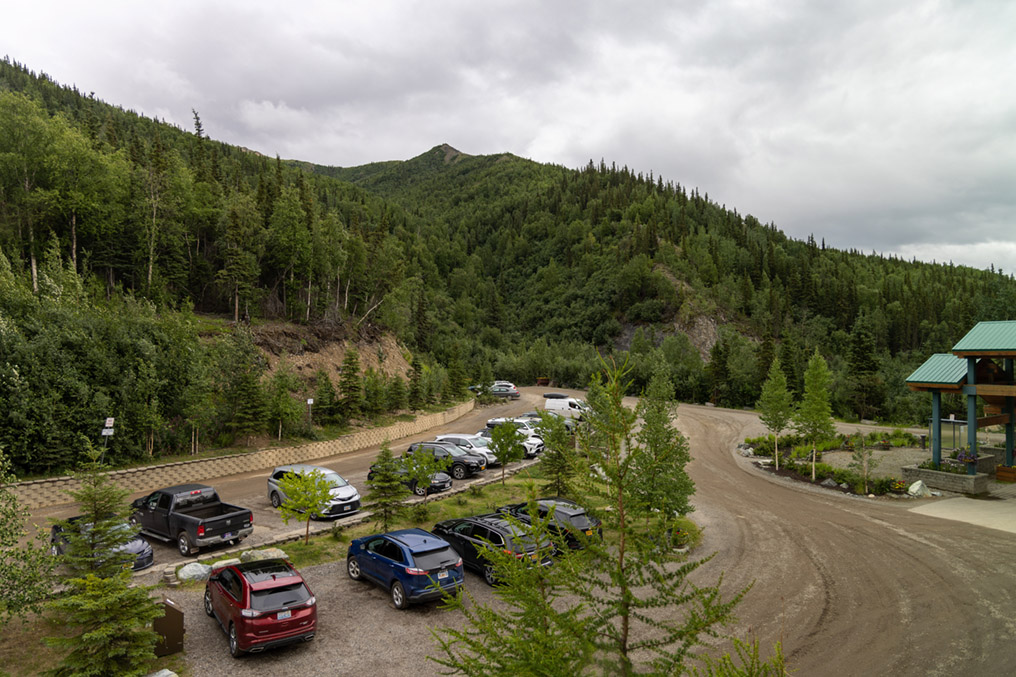
|
- The tour included a bus ride into the National Park of Mount Denali. There were too many clouds to see
Mount Denali (used to be called Mount McKinley). The bus was controlled by the National Park but was
made for kids not adults. Many windows didn't close properly. It was cold and uncomfortable. I wouldn't
recommend it for most. It was too crowded to take photos inside the bus. The best photos were
photos of the bus camera on drop down screens. Very sad.
- The flight over the Denali National Park was the highlight of the Denali pre-tour. The pilot taught us
so much about glaciers and the park. The skill of the pilot was incredible. As a pilot myself I was very
impressed with how he handled the turboprop between layers and his knowledge of the park. This hour and a
half flight was the best of Alaska so far.
- Photos
|
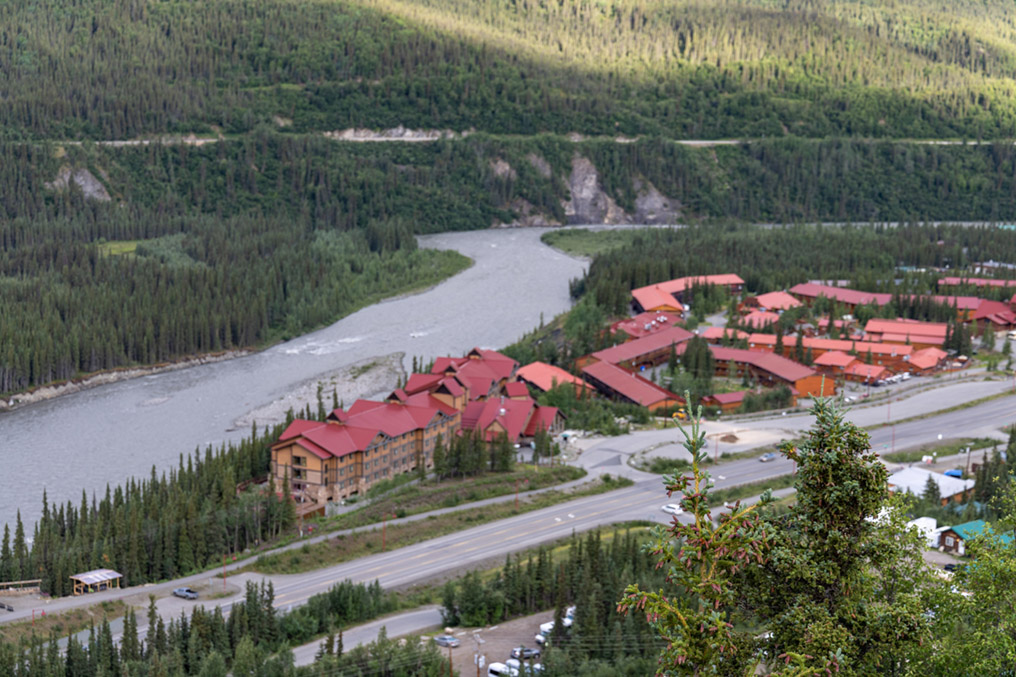
|
- They changed the name of the mountain from McKinley to Denali, but they did not change the name
of the village, still called McKinley Park. Although the Grand Denali Hotel was more like a Motel
6 than not, it did have a commanding view of the surroundings and was probably one of the better
hotels in the area. We departed the morning of the 20th enroute to see the Buser Dogs and stay at
the Alyeska Hotel.
The Mary Carey rest stop with bakery and gift shop was interesting. Mary was one of first women to
settle into the wilds of Alaska against all advice to contrary. Plenty of full size prints of
wildlife and landscape for sale.
Happy Trails Kennel is the home of four-time Iditarod Champion Martin Buser and family. It was
established in 1982 with the express purpose to raise and train happy, fast long distance sled
dogs to race and win the Iditarod. The kennel began with the cross of an Yukon River village dog
named Petuk and a German Short-Haired Pointer named Faulk. In the beginning years, Martin Buser
began to believe that the sprint dogs raised and raced by prominent sprint mushers Gareth Wright
and George Attla could be trained for long distance. Martin and sprint musher, Jim Welch, who also
lived in the Eagle River area at the time, became friends.
Martin had, in the mean time, acquired genes of some of the most athletic fastest dogs in Alaska.
They were termed hounds due to a relatively shorter hair, sloping back and sharply angulated front
shoulders. Many well established Iditarod mushers laughed at Martin's experiment, said the dogs
would never survive the rigors of the Norton Sound coastal winds, would lose their appetite and
would have to be babied all the way to Nome. Indeed, they did require some babying and still do
today but they fought through one of the Iditarod's most dangerous storms in 1991 to arrive
second in Nome.
- Photos
|
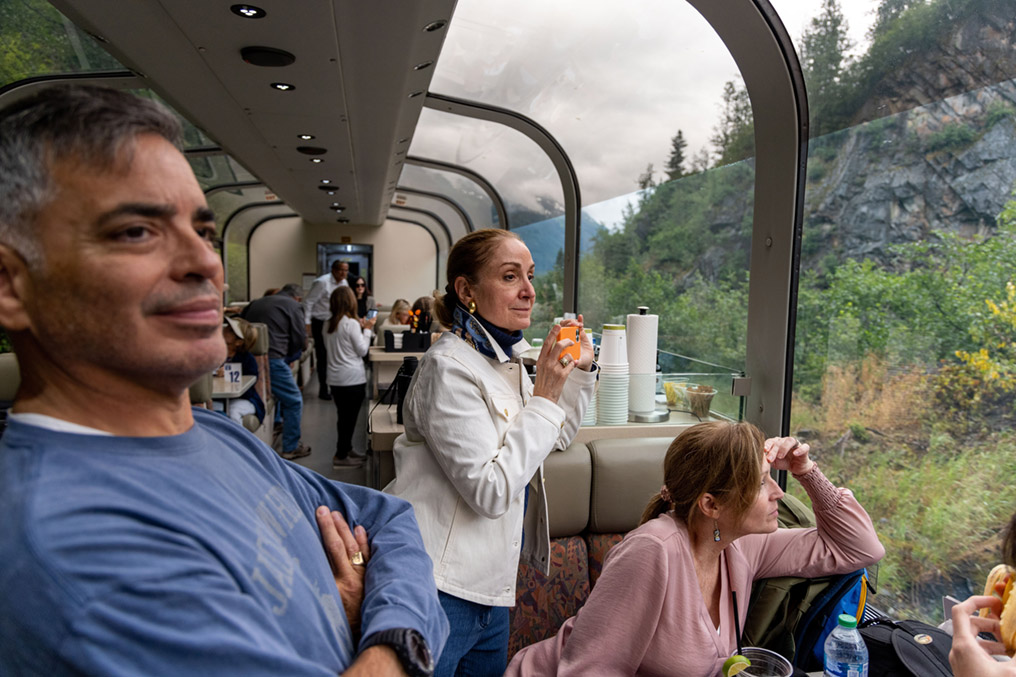
|
- I boarded a bus from the Alyeska Hotel to the "train station", kind of a wide spot in the road.
It was the same train bringing Janet and her family to the ship. After a few formalities in my
designated coach, I joined Janet and company in their coach. It was a beautiful train ride down
to Seward. The train stopped very close to our ship, the MV Silver Shadow. The usual procedures
with paperwork to board took some time, but finally we were brought to our rooms. Our luggage was
magically already there. They do have the luggage service worked out very well. The rooms were
gorgeous with a big balcony. Champagne and fruit and all the amenities were already laid out for us.
What a luxurious way to travel.
- Photos
|

|
- Hubbard Glacier is located in Wrangell–St. Elias National Park and Preserve in eastern Alaska and
Kluane National Park and Reserve in Yukon, Canada, and named after Gardiner Hubbard.
Before it reaches the sea, Hubbard is joined by the Valerie Glacier to the west, which, through
forward surges of its own ice, has contributed to the advance of the ice flow that experts believe
will eventually dam the Russell Fjord from Disenchantment Bay waters.
The Hubbard Glacier ice margin has continued to advance for about a century. In May 1986, the
Hubbard Glacier surged forward, blocking the outlet of Russell Fjord and creating Russell Lake.
All that summer, the new lake filled with runoff; its water level rose 82 ft, and the decrease
in salinity threatened its sea life.
Around midnight on October 8, the dam began to give way. In the next 24 hours, an estimated 5.3
cubic kilometres of water gushed through the gap, and the fjord was reconnected to the ocean at
its previous level. This was the largest glacial lake outburst flood in recorded history,
It takes about 400 years for ice to traverse the length of the glacier, meaning that the ice at
the foot of the glacier is about 400 years old. The glacier routinely calves off icebergs the
size of a ten-story building. Where the glacier meets the bay, most of the ice is below the
waterline, and newly calved icebergs can shoot up quite dramatically, so that ships must keep
their distance from the edge of the glacier in Disenchantment Bay.
- Video of the Hubbard Glacier, Alaska
- Photos
|
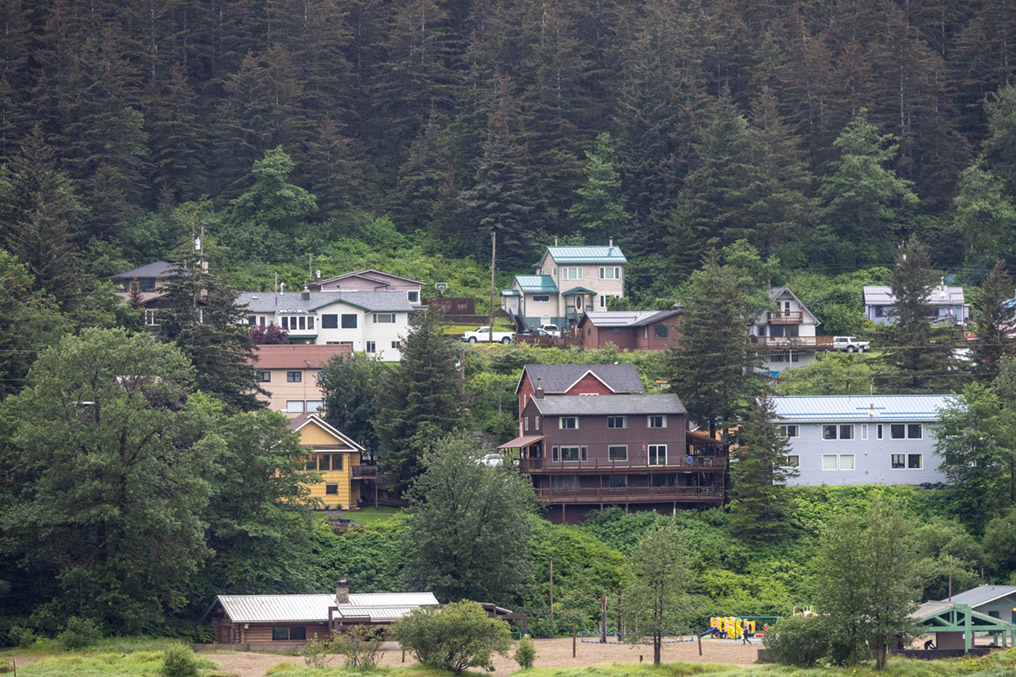
|
-
In Juneau, I signed up for a helicopter ride up to where Alaskan Huskies were being trained tas sled dogs.
I was going to ride and mush a dog team. Unfortunately the weather grounded the helicopters so I chose
a massage onboard the ship instead.
Juneau is the capital city of Alaska. Located in the Gastineau Channel and the Alaskan panhandle, it is the
second-largest city in the United States by area. It is larger by area than both Rhode Island and
Delaware. Juneau was named the capital of Alaska in 1906, when the government of what was then the
District of Alaska was moved from Sitka as dictated by the U.S. Congress in 1900.
Juneau experiences a daily influx of roughly 6,000 people from visiting cruise ships between the months of
May and September.
The city is named after a gold prospector from Quebec, Joe Juneau, though the place was once called Rockwell
and then Harrisburg (after Juneau's co-prospector, Richard Harris).
Juneau is unique among the 49 U.S. capitals on mainland North America in that there are no roads connecting
the city to the rest of the state or North America. The absence of a road network is due to the extremely
rugged terrain surrounding the city. This in turn makes Juneau a de facto island city in terms of
transportation, since all goods coming in and out must go by plane or boat, in spite of the city's location
on the Alaskan mainland.
- Photos
|

|
-
We moored in Skagway and took a small ferry to Haines. Six of us boarded a tour bus for a photographic expedition
of Haines. These were some of the photos we captured. The port of Skagway is a popular stop for cruise ships,
and the tourist trade is a big part of the business of Skagway. The White Pass and Yukon Route narrow gauge railroad,
part of the area's mining past, is now in operation purely for the tourist trade and runs throughout the summer months.
Skagway is also part of the setting for Jack London's book The Call of the Wild, Will Hobbs's book Jason's Gold, and
for Joe Haldeman's novel, Guardian. The John Wayne film North to Alaska (1960) was filmed nearby.
The name Skagway is derived from sha-ka-ԍéi, a Tlingit idiom which figuratively refers to rough seas in the Taiya
Inlet, which are caused by strong north winds.
The original Native name for Haines was Deishú, meaning "end of the trail" by the Chilkat group of Tlingit. It received
this name because they could carry their canoes from the trail they used to trade with the interior, which began at the
outlet of the Chilkat River, to Dtehshuh and save 20 miles of rowing around the Chilkat Peninsula.
The place is well known for its sandy beaches Velika and Mala Saplunara and Blaca, surrounded by dense pine woods. Due to
its sandy beaches, its name has roots in Latin word for sand – ‘sabulum‘. The bay is opened to the south-west, so it
has a lot of natural sunshine and is sheltered from Bura and Maestral winds. The bay itself is about one kilometre
long and due to its secluded position, the waters here are very warm all year around. The bay has its restaurant,
café and a small shop. Some people that own houses in the bay rent rooms and apartment to tourists so it is fairly
easy to find a place to stay here.
The Klondike Gold Rush of 1896–1899 changed the region greatly. Haines became a supply center for the Dalton Trail
from Chilkat Inlet offered a route to the Yukon for prospectors. Gold was also discovered 36 miles from Haines in
1899 at the Porcupine District.
- Photos
|

|
-
We boarded a whale watching boat and went out into the bay to see some whales, some seals resting
on buoys and some sea otters perform for us. Then we proceeded
to Finn Island and had a scrumptious lunch with Alaskan crab, salmon, and prime rib. It was
excellent and beautiful scenery as well. We had smores for desert.
- Video of DJ Fabricio
- Photos
|

|
-
The 26th in Ketchikan was the only sunny day we had during the entire trip. Of course, the city
photographs beatifully in this clear sunny atmosphere. There was a big Coast Guard station here.
In the next step, I went salmon fishing.
Downtown Ketchikan is a National Historic District. Ketchikan is located on Revillagigedo Island,
so named in 1793 by Captain George Vancouver. Ketchikan is named after Ketchikan Creek, which flows
through the town, emptying into the Tongass Narrows a short distance southeast of its downtown.
"Ketchikan" comes from the Tlingit name for the creek, Kitschk-hin.
Ketchikan Creek served as a summer fish camp for Tlingit natives for untold years before the town was
established by Mike Martin in 1885. He was sent to the area by an Oregon canning company to assess
prospects. He established the saltery Clark and Martin and a general store with Nova Scotia native George
Clark, who had been foreman at a cannery that burned down.
Ketchikan became known as "Alaska's first city" due to its strategic position at the southern tip of the
Inside Passage, connecting the Gulf of Alaska to Puget Sound.
Ketchikan has the world's largest collection of standing totem poles, found throughout the city and at four
major locations: Saxman Totem Park, Totem Bight State Park, Potlatch Park, and the Totem Heritage Center.
Most of the totems at Saxman Totem Park and Totem Bight State Park are recarvings of older poles, a practice
that began during the Roosevelt Administration through the Civilian Conservation Corps. The Totem Heritage
Center displays preserved 19th-century poles rescued from abandoned village sites near Ketchikan. The Chief
Kyan pole in Whale Park in the city center is one of the featured background images in most US passports.
- Video of Salmon Fishing
- Photos
|
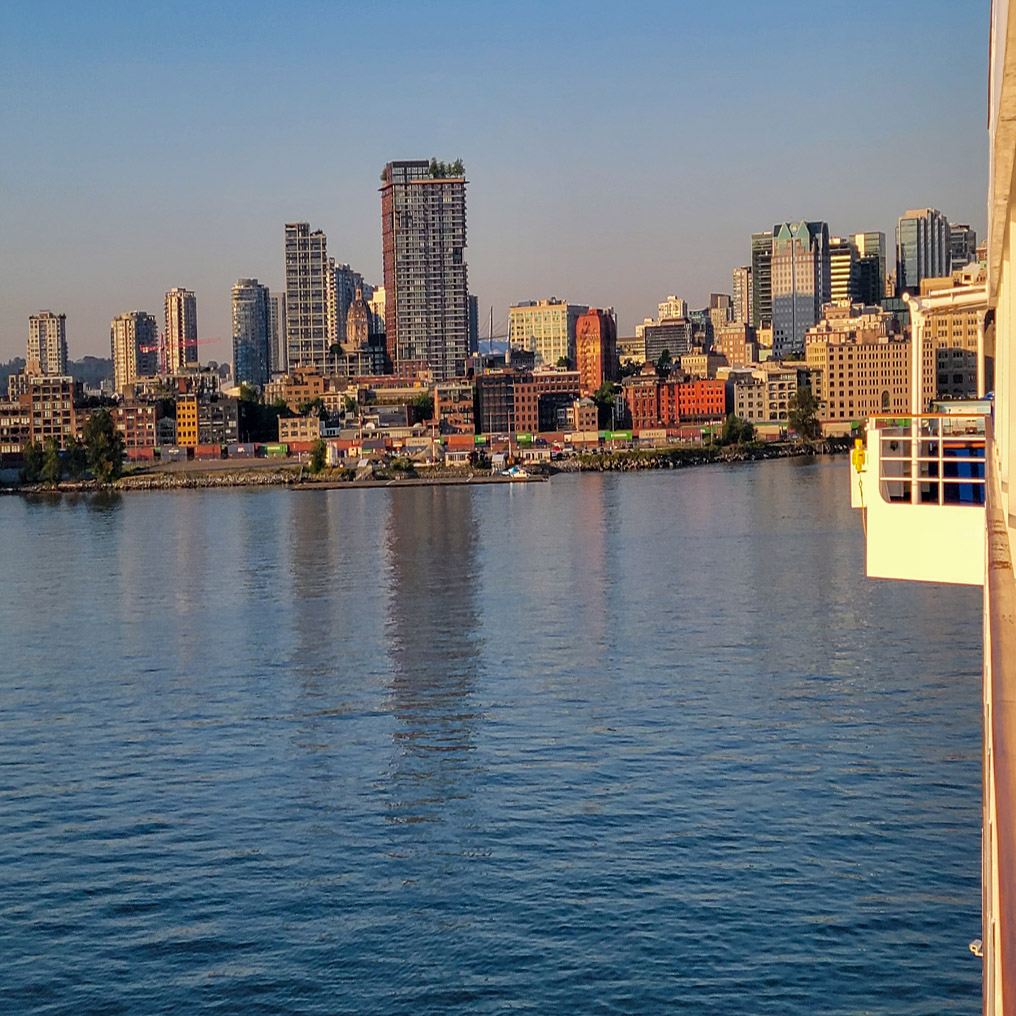
|
-
And so, our cruise ended in Vancouver, British Columbia, Canada. I am very familiar with this harbor and city,
as I managed the 65 foot yacht "MV CHAOS" here for several months. Returning to Vancouver brought back a flood
of great memories.
The Port of Vancouver is the fourth-largest port by tonnage in the Americas, the busiest and largest in Canada,
and the most diversified port in North America. While forestry remains its largest industry, Vancouver is well
known as an urban centre surrounded by nature, making tourism its second-largest industry. Major film production
studios in Vancouver and nearby Burnaby have turned Greater Vancouver and nearby areas into one of the largest
film production centers in North America, earning it the nickname "Hollywood North".
- Photos
|










